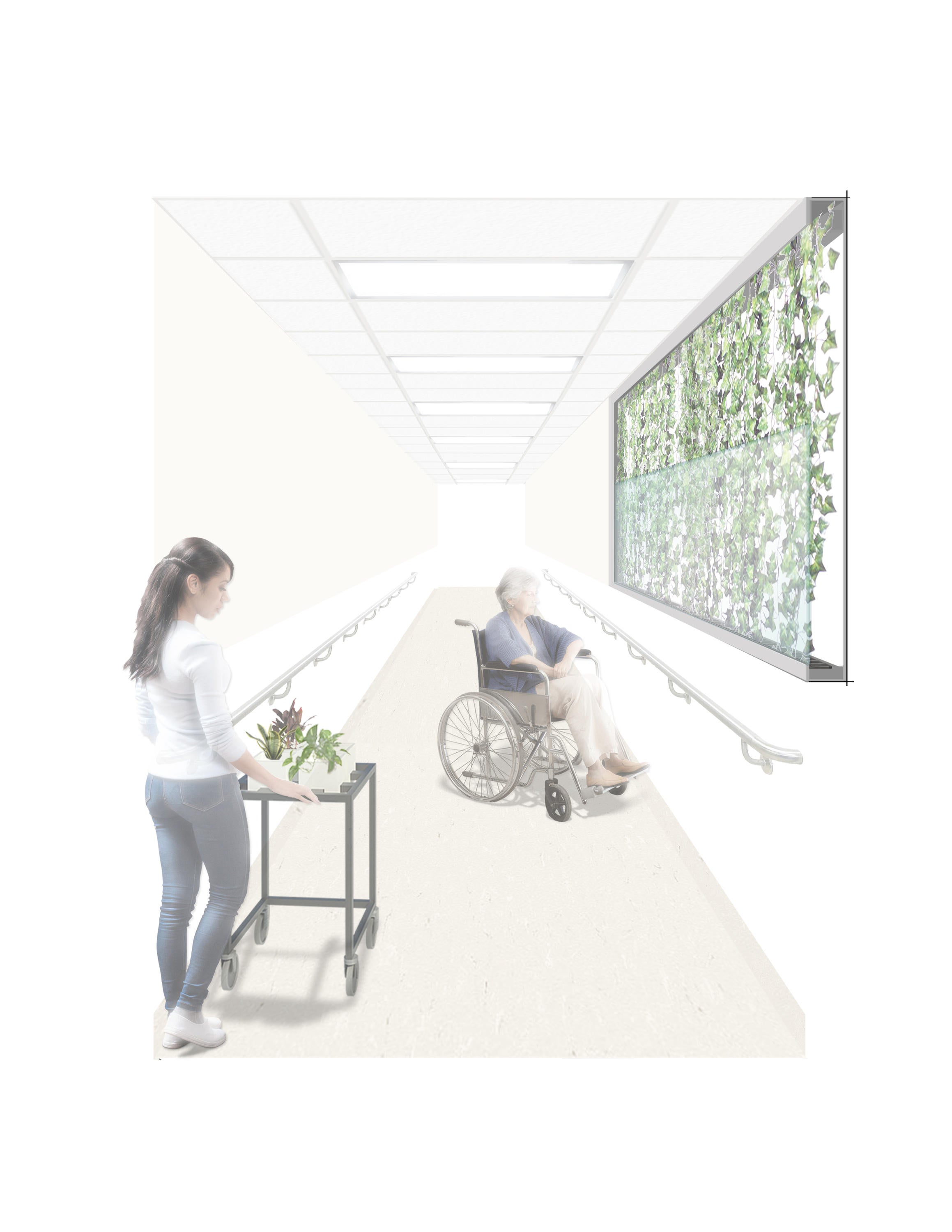
Of the thesis entitled: The Nature of Healing: Living Architecture for Long Term Care & Rehabilitation Hospitals
Abstract:
Healthcare interiors are perceived as stressful and isolating spaces; endured during times of vulnerability causing stress for patients, visitors and staff. This thesis examines studies, which prove that this psychological stress is intensified by to the overly artificial and sterile conditions typical to medical environments. Further studies collected, reveal that this stress worsens the sensation of symptoms, causing increase in medication dosage and overall hinders the immune system and recovery outcomes. The paradox of the sterile healing environment is that nature, the adversary, is essential to healing processes. This thesis concentrates on research proving that not only do people generally prefer natural environments, as supported by the theory of Biophilia (see definition), but that exposure to elements of natural landscapes in healthcare spaces, greatly improves the holistic health of patients, visitors and staff.
This thesis examines the historical and contemporary factors influencing the design of hospitals. In the past few decades, healthcare design has progressed by integrating therapeutic design, through these strategies discussed, Evidence-Based Design and Biophilic Design (see definitions). However, through experience as a patient, visitor and designer in healthcare architecture, it is evident that there are still confines limiting the evolution of therapeutic design in hospitals. This thesis questions why healthcare standards prohibit the integration of living (plant) systems into more interior spaces, past the atrium. In seeking these answers it became clear that further innovation is necessary for architectural design to synthesize the qualities of sterile and therapeutic healing environments, to achieve healthcare homeostasis.
Various types of living systems are examined for exterior and interior application, including comparisons with artificial biophilic design strategies. The design intervention proposed in this thesis integrates living systems into typical architectural assemblies, and is referred to as Living Architecture. Living Architecture expands the threshold between healthcare interiors and horticultural therapy, to bring long-term plants closer to long-term patients. This is done by exploring the design possibilities for healthcare architecture to integrate spaces for patients to physically engage with living systems, year-round in various locations inside and outside the hospital. The challenge of this design study is meeting healthcare requirements for infection control, accessibility, maintenance and the financial limitations for public healthcare in Canada today. There is an opportunity to redefine health care architecture to suit the transformative nature of complex continuing care and rehabilitation hospitals. This progression could then influence other health care typologies to bring down the barriers between nature and medicine, by integrating living systems as the new standard approach to health care architecture.
The examining committee is as follows:
Supervisor:
Terri Boake, University of Waterloo
Committee Member:
Adrian Blackwell, University of Waterloo
Internal Reader:
Jane Hutton, University of Waterloo
External Reader:
Paul Dowsett, Sustainable TO
The
committee
has
been
approved
as
authorized
by
the
Graduate
Studies
Committee.
The
Defence
Examination
will
take
place:
Monday
January
14,
2019
10:00
AM
ARC
2016
A
copy
of
the
thesis
is
available
for
perusal
in
ARC
2106A.